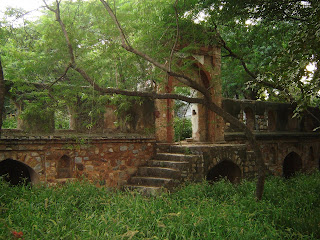

The Mehrauli Archaeological Park -- located next door to the Qutab complex is -- probably the "best'' conserved part of the city. A successful collaboration between the Delhi Tourism and Transportation Development Corporation (DTTDC), the State Department of Archaeology, the Delhi Development Authority (DDA) and the Indian National Trust for Art and Cultural Heritage (INTACH), this patch of "green'' has the remains of all the cities of Delhi.
Delhi’s only Archaeological Park, spread out over a sprawling 200 acresin Mehrauli, encompasses over 100 historically significant monuments built over five centuries—from the early 11th century to the late Mughal period. Among its attractions are the Jamali Kamali mosque, Quli Khan’s tomb, Gandhak-ki-baoli, Rajaon-ki-baoli, Madhi Masjid and Balban’s tomb—all within walking distance of each other.













